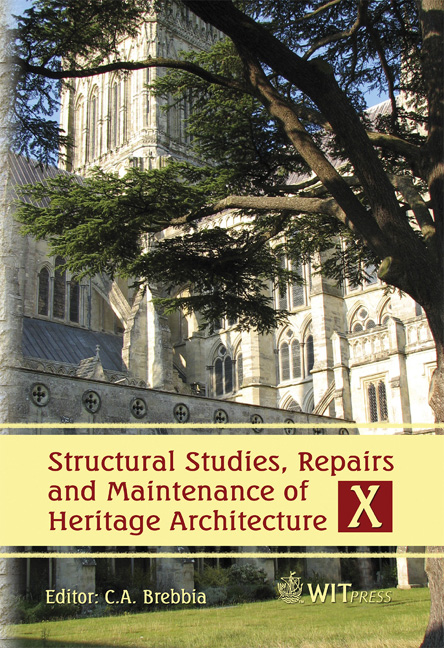Rebuilding Of An Ancient Castle Including A Base-isolated Museum Hall
Price
Free (open access)
Transaction
Volume
95
Pages
10
Published
2007
Size
2,587 kb
Paper DOI
10.2495/STR070391
Copyright
WIT Press
Author(s)
S. Sorace & G. Terenzi
Abstract
A design hypothesis to rebuild the main wing of the medieval castle of Prampero, devastated by a violent earthquake in Friuli in 1976, is presented in this paper. The intervention suggests that the building be used as a museum to exhibit the artistic heritage of the owners. This new destination prompted some architectural rearrangements of the interiors of the building as compared to its original configuration, while preserving the global volume and the interstory heights, as well as the outer appearance of the castle, including its façades, the roof and all finishes. The structural design includes some updated traditional solutions for the masonry walls, the wooden floors and the roof. At the same time, a non-conventional solution is adopted for the floor accommodating the main exhibition hall, consisting in the incorporation of a base isolation seismic protection system. Details of the design analyses carried out, with special regard to the numerical enquiry developed on the base-isolated floor, are provided in this paper. Selected drawings of the technical solutions adopted are also presented. Keywords: historical buildings, rebuilding, structural rehabilitation, seismic protection, art contents, base isolation. 1 Introduction A number of medieval castles were seriously damaged, if not partially or totally destroyed, by the earthquake that hit the region of Friuli, in north-eastern Italy, in 1976. Generally belonging to private owners, several of these monumental buildings were not rebuilt, and have remained in their post-earthquake conditions until the present day. In some cases, minor stabilization and strengthening works
Keywords
historical buildings, rebuilding, structural rehabilitation, seismic protection, art contents, base isolation.




